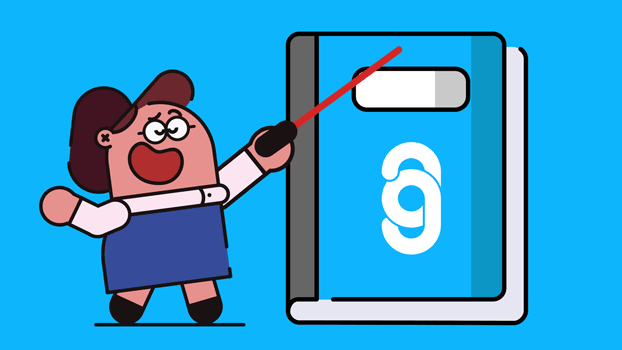Animation In The Classroom
The education system plays an important role in teaching children key concepts, shaping their perceptions and formulating their understanding of core subjects. As education evolves, so do the techniques that educators use in which to help children gain a firmer grasp on more difficult subjects.
From the chalkboard to interactive whiteboard and of course the introduction of the internet; education has evolved rapidly over the last two decades. All of these innovations have sought to make education more accessible, engaging and easier to comprehend for future generations.
With this in mind, we of course wanted to focus on animation in the classroom. In recent years the use of animation in both training and education videos as well as in the classroom has skyrocketed. And for good reason!
Below we explore key reasons why animation in the classroom is worth considering for your school.
-
Character Animation Peaks Student Interest
In the age of technology, children now more than ever are exposed to video content. Be it cartoons, television or online video sources children regularly interact with video content and of course relatable characters. Feeding off of this, the use of character animation allows students to build up a connection with characters which in turn helps them absorb information more quickly and easily.
Recent examples of our character driven animation work include this adorable canine brand mascot, Monty The Dog.
2. Animation Is A Multi-Sensory Tool
A key strength of animation is its ability to be used as a multi-sensory teaching experience. The power of animation allows students to see, hear and talk about the experience they are engaging with, which makes it a more interactive experience than traditional paper based teaching methods.
3. Animation Conveys Key Information Quickly
Animation can say a lot in a short space of time. The ability for students to rapidly resonate with character traits, body language and tone of voice whilst being stimulated by aesthetically pleasing animated movements allows for an enhanced learning experience and for them to absorb key information more quickly.
In the example below we worked with Berkeley on an animated demo video for their new members of staff. The video took a humorous approach but held a serious message that was designed to stick in their minds for the long term. Take a watch for yourself and decide if you think this information would have been better absorbed via a more traditional method, such as a fact sheet?
4. Animation Breaks Down Difficult Concepts
Sometimes no matter how many times you say something or how many times someone reads something, they cannot comprehend what you are trying to explain. Animation uses the power of being both a visual and listening tool to explain more complex concepts. It’s also more powerful than traditional video in this instance as it allows you to create scenarios and situations in an art form that cannot otherwise be replicated in real life.
In the animated explainer video below for Smartwires we designed a video that captured people’s attention and informed them of a concept that otherwise may have been difficult to digest. Watch the video below and imagine how it may have looked in a static powerpoint presentation.
5. Animation Encourages A Shared Learning Experience
Animation in the classroom involves all participants and creates a shared learning environment for students. It allows students to talk as a group about the key ideas and concepts they have seen and promotes discussion and interaction around central themes.
An Idea: Something to consider when using animation in a shared learning environment is an animated storyline. This way you can pause the animation at key points during the story and invite discussion within the group as to what they consider could be the next steps or what is going to happen next in the video. This technique is great at holding a viewers’ attention and keeping them engaged throughout the duration of the video.
6. Animation Can Be Used Across All Subject Areas
From explaining complex algebra to sports techniques, animation can be used across various subject areas as an effective learning mechanism.
Maths: Finding it difficult to explain a complex numeracy problem? Animation can help the numbers come to life and explain key formulas and rules to follow in an engaging manner.
English: Be it teaching punctuation and spelling or linguistics, animation can help convey these concepts in an easy and digestible format.
Science: We’ve all sat through science classes trying desperately to understand atoms and scientific equations. Bring these to life and recapture your students with an animated version.
In the below healthcare animation for Devyser we needed to communicate a complex message in a clear and accurate manner while considering the range of audiences it would need to appeal to (doctors, patients, staff).
Let us know if you felt the video was clear and easy to understand?!
Ready To Use Animation In The Classroom?
As we’ve explored, animation in the classroom is a powerful and impactful way of enhancing a students learning experience. As educators look for techniques to make their classrooms more engaging and increase the effectiveness of their learning environment, we hope they consider animation in that process! If you’d like to learn more about the services we provide as well as costs and ideas then please don’t hesitate to get in touch. Our team look forward to hearing from you and will work with you to help envision your dream concept.
Call us on 0207 288 6319 or email us at wecanhelp@theanimationguys.com
Error: Contact form not found.
Share this bite
The Animation Video Workbook

The 1-stop shop for everything you need to know about making the most awesome video possible



